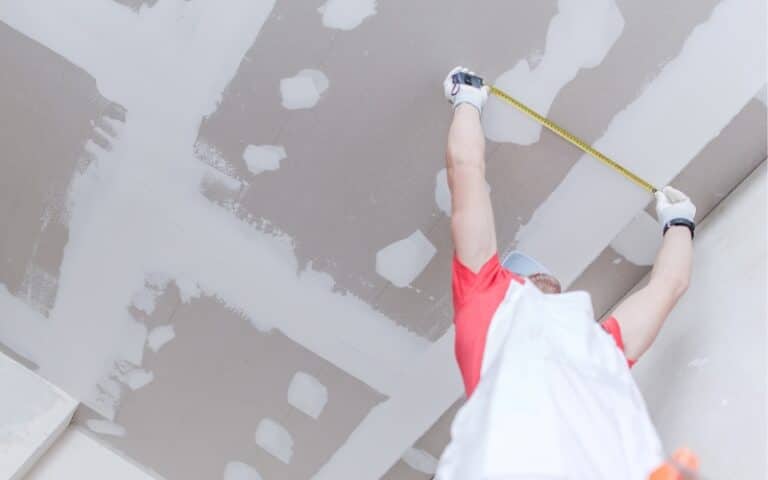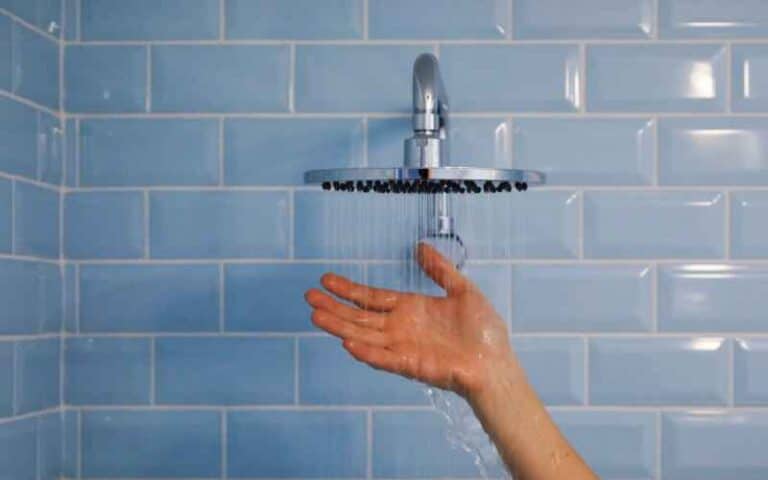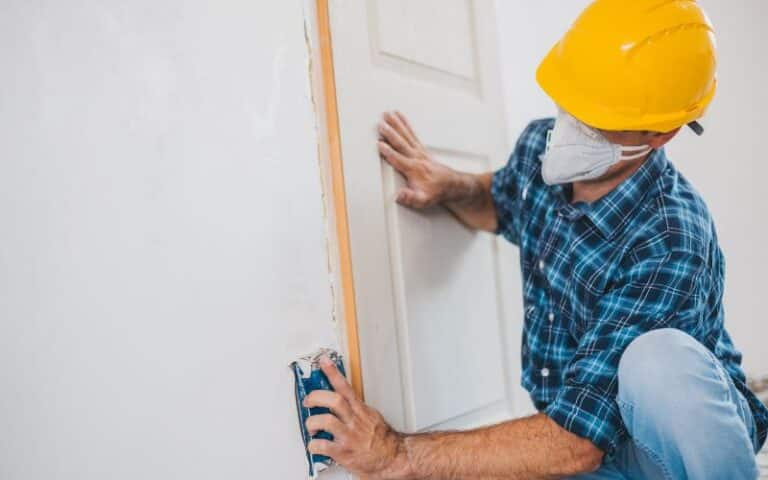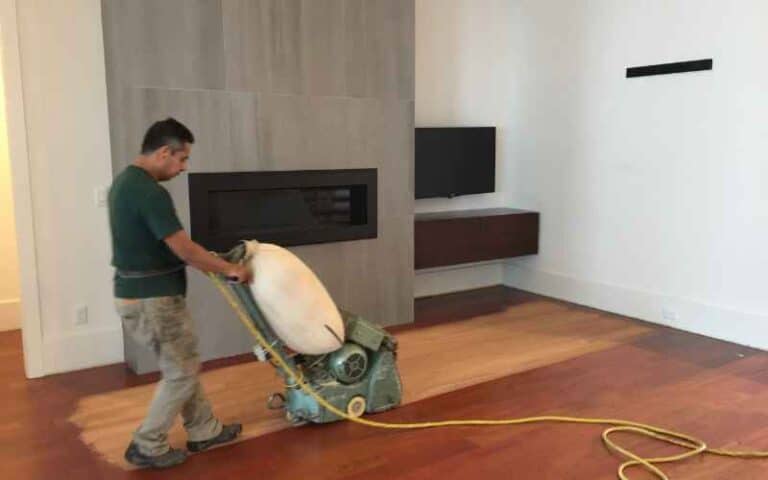After installing drywall for your walls, applying the mud compound is the next step. However, like every other semi-solid compound, they tend to drop off and hit the floor.
Drywall mud is a simple combination of gypsum and water. So many wonder if it leaves a stain on concrete or other surfaces.
Drywall mud can stain concrete and other surfaces, including finished and painted surfaces. However, you can easily clean off the mud using water, shovels, or other appropriate tools. You can take steps to prevent the stains altogether.
This article gives practical steps to achieve your goal of having a clean job. Ultimately, you will have all it takes to remove mud stains from your concrete, floor, or wood.
Ready for a Drywall Quiz?
Can Drywall Mud Stain Concrete?
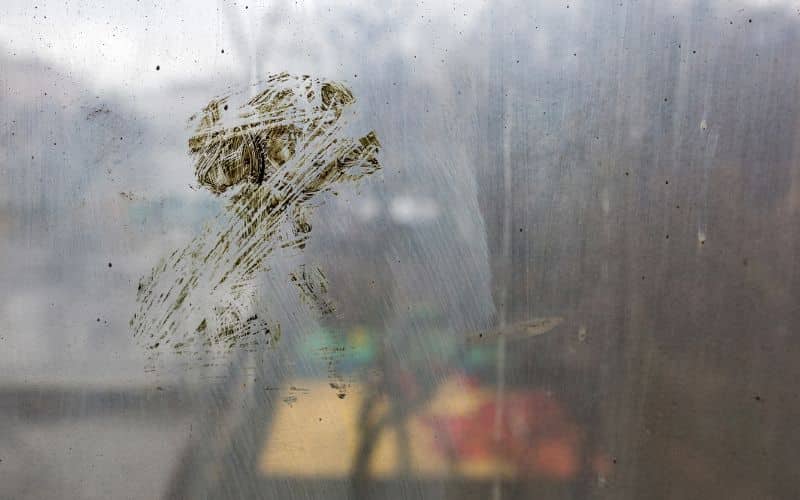
Drywall mud dries off after a while and can stain concrete when it turns solid. People use drywall mud to hold different parts of walls together and to cover holes and cracks.
The general function of drywall mud shows that it will stick to any surface, smooth or otherwise. Concretes usually have smooth surfaces, the prime condition for sticking to mudwall.
So if you have a drywall mud job on walls with concrete at the base, ensure there will be stains. However, there is a way to get the best out of the situation.
The two options are to either remove the drywall mud stains or prevent them. But if you already have concrete stains, all you have is the first option.
How to remove Drywall Mud Stain on Concrete?
Drywall mud forms solid on concrete which requires cleaning and removal. Concrete surfaces are usually cold, which reduces the adhesion between the surfaces.
In cold areas where the concrete can absorb moisture, the mud softens after a while and slides off. However, it continues to form solid in a hot environment.
If you want to prevent that or can’t wait for the mud to soften, there are steps to removing the mud stain on concrete.
These steps include;
#1. Add Water to Moist the Floor
Drywall mud softens when you sprinkle them with water. Adding water to the stains is the first step toward removing their stains.
Drywall mud adhesion to concrete increases when it becomes solid. In the same, adding water softens the drywall mud and reduces the bond between the mud and the concrete.
The simple step of pouring water is enough to remove the tiny drops of mud. The next step takes care of the larger chunks.
#2. Use a Shovel or a Scraper
You can use a square mouth shovel or a plastic scraper to remove the large chunks of drywall mud on concrete. A shovel is more effective and time efficient but has a significant disadvantage.
Steel shovels leave white or gray marks on the concrete. If the concrete is smooth or with paint, this might be the wrong tool for the job.
A plastic scraper is a better option for smooth concrete surfaces. It doesn’t leave heavy marks like a steel shovel. However, it is not as strong and effective.
The good news is that both will get the job done. Note that these two only work on concrete with smooth surfaces, painted or not.
#3. Clean Small Stains
After removing the tiny drops and the large chunks using the shovel and scraper, the next is to clean the white residue. With soapy water, you can easily clean off the residue.
Some prefer to use warm water for this process. After applying water, a simple scrubber with an extended hand will do the job.
The long hand will help, so you don’t have to bend while cleaning the stains. Some would use a mop for this process, depending on the level of stain on the floor.
#4. Flush Mud on Irregular Concrete Surfaces
Some concrete surfaces are irregular, which makes it difficult for a shovel or scraper to do an adequate job. A water flush comes in handy at this point.
After wetting with soapy water, the bond or adhesion between the drywall mud and concrete reduces.
Flushing with high or moderate-pressure water can remove the mud with minimal stains. This step is helpful for rough concrete surfaces.
#5. Use an Electric Floor Scrubber
Sometimes, the surface area of the concrete is big for handpicking or manual scrapping. In such situations, an electric scrubber comes in handy.
It gets the job done faster and leaves the concrete cleaner. However, this equipment is too expensive for a single, one-time job.
The best option is to call in experts that use the machine or rent one and do it yourself.
Here is a table summarizing the best cleaning method for surface type:
| Type of Surface | Best Cleaning Method |
|---|---|
| Finished or Painted Concrete | Water and Shovel or Scraper |
| Rough Concrete | High-pressure water |
| Wood floor | Water and a plastic scraper |
| Large Surfaces | Electric Scraper. |
How to prevent Drywall Mud Stains?
Another method to have a clean mudding job is to prevent stains as much as possible. Some preventive method allows you to eliminate the issue, while others reduce the cleaning job.
It is better to prevent drywall mud stains, and here are the steps involved:
#1. Use proper tools
A straightforward way to prevent drywall mud statin is to use the proper tools while doing the mud job. A mud pan helps explicitly to prevent having multiple stains on the floor.
Scooping mud directly from the bucket and onto the wall can lead to more than usual stains. Using a pan helps to carry the mud closer to the wall before application.
#2. Scoop Small Quantity
If there is no pan to help minimize the spills, scooping small amounts is another way to prevent drywall mud stains. Scooping large amounts is a fast way to finish the job.
But the extra time goes into cleaning off the massive stains and drops. Ultimately, scooping large amounts of drywall compounds at once is not time efficient.
#3. Spread tarps
Using tarps or sheets on the floor helps to collect mud drops. You can quickly spread the sheets some feet away from the wall.
The good thing is that you can collect the drywall mud drops before it turns solid and use them for the wall. You only need to cover the whole floor when you’re mudding the roof.
How to Clean Drywall off the Floor?
Drywall stains on the floor are usually in two forms. The first is drywall dust. Before mixing the compound, you can have dust on the floor.
Also, dust settles on the floor when sanding the compound to smoothness. You have to clean it up to have that perfect job.
Another type of stain is the compound dropping on the floor. Depending on the floor, you can easily clean the compound off the floor using the same steps for concrete.
However, cleaning the dust requires a different approach.
Here is how to clean drywall dust off the floor:
- Spread plastic sheets before using sandpaper on the wall. Taping the sheet to the wall helps to hold it down and prevent slipping.
- Grab the edges and take outside the space to dust off or dispose of the entire sheet. You can have someone to help hold the other edges.
- If no sheets are on the floor, sweeping is the alternate step. Sweep gently with a soft broom to avoid raising the dust. Sweep into a dustpan and dispose of the waste.
- Use a vacuum cleaner to remove residues. It is better to have the vacuum cleaner outside the area with a long hose allowing you to use the mouthpiece.
You can then mop the floor after using the vacuum cleaner.

